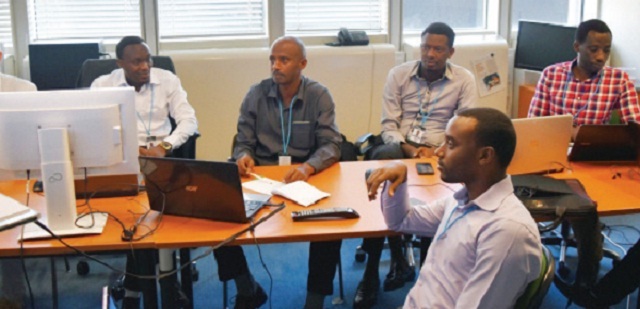
RWANDA: Strategists to use robust analytical tools
Kampala, Uganda | THE INDEPENDENT | A team of Rwandan energy experts have completed a three-week training course hosted by the International Atomic Energy Agency (IAEA) that will, hopefully, help shape the future of the country’s energy mix.
According to a statement issued by the IAEA after the training, Rwanda is to assess the feasibility of introducing nuclear power, according to the IAEA Milestones approach.
“We’re looking at all possible energy options,” the report quotes Jerome Nsengiyaremye, the energy policy analyst at Rwanda’s Ministry of Infrastructure who attended an IAEA fellowship training in Vienna, saying.
“Today, we’re covered,” Nsengiyaremye reportedly said, “But if we take into account our economic development, GDP and population growth, we have to plan proactively to meet our energy demand in, say, 2040.”
“There is a need to think about the future now,” Nsengiyaremye added as he and other experts sat behind screens as they tried to solve a new challenge of how to meet the country’s mounting electricity demand in the years to come.
The training comes at a time when Rwandans are celebrating flattering economic growth.
According to the report, Rwanda is looking into diverse sources of power, such as hydro power, methane gas, and peat. The country is also exploring potentials in wind, solar and geothermal energy.
In a bid to keep pace with the growing energy demand, the studies prepared with the IAEA’s assistance will form the basis for decision makers.
Access to electricity in Rwanda is a priority for the government. The number of households with access to electricity has tripled in the last seven years with 34.5% of households in the country using electricity today from 10.8% in 2010. The target is to provide electricity access to 70% of Rwandan households by June 2018 through a mix of connections to the national power grid and off-grid solutions.
According to the Rwandan Energy Sector Strategic Plan (ESSP) and the IAEA-Rwanda Country Programme Framework (CPF), the target is to increase installed capacity from 160 MW in 2015 to 563 MW in 2018.
At the request of a Member State, the IAEA provides guidance and technical support for evaluating energy options. While this can contribute to sustainable development, the IAEA does not influence Members States’ choice of energy options. Its energy planning approach provides an opportunity to evaluate all energy options equally.
Various models and tools developed by the IAEA have helped Rwandan experts improve their understanding of the country’s energy options. With Energy Balance Studio (EBS), they established an overview of the contribution of different fuels to Rwanda’s economy. Through the analysis of the energy demand tool called MAED, they have developed plausible scenarios for growth in energy demand.
Using MESSAGE, they have analysed energy supply strategies that respond to this growth in demand. The tools have helped them study the influence of social, economic, technological and policy changes in Rwanda’s energy and electricity demand. Multiple factors were considered, including demand patterns, current resources, current supply, population growth and economic development.
The application of the IAEA model creates an understanding of the requirements for appropriate energy planning and how the different components of the energy system interact and influence each other. Most importantly, they allow charting a pathway for the energy sector in support of Rwanda’s Economic Development and Poverty Reduction Strategy and Vision 2050, said Manuel Welsch, an energy economist at the IAEA.
 The Independent Uganda: You get the Truth we Pay the Price
The Independent Uganda: You get the Truth we Pay the Price



